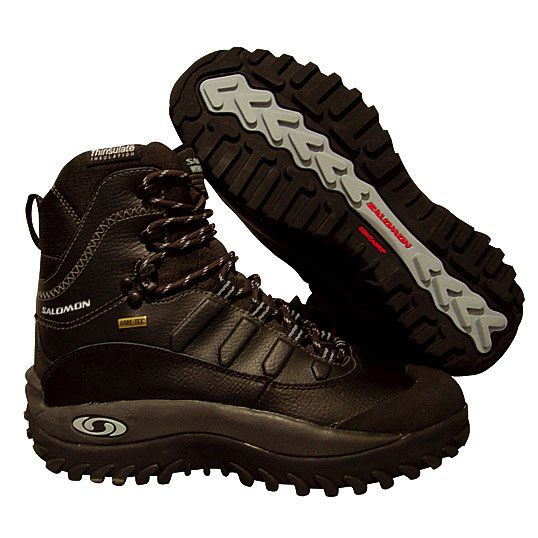Trekking boots are shoes designed for hiking routes. It protects the legs from injury, such as dislocation or fracture. There are many varieties of such shoes, depending on the duration of the trip and the severity of the load.
Load type
According to the permissible load, trekking shoes are divided into 4 types.
Trekking sneakers
 Designed for short trips, such as weekend trips. They are light in weight and made of dense materials. The upper part of the shoe is usually made of leather or something denser to protect the feet from external influences. The trekking shoes have a waterproof inner lining, a durable inner liner and a quality rubber outsole. They are perfect for off-road hiking.
Designed for short trips, such as weekend trips. They are light in weight and made of dense materials. The upper part of the shoe is usually made of leather or something denser to protect the feet from external influences. The trekking shoes have a waterproof inner lining, a durable inner liner and a quality rubber outsole. They are perfect for off-road hiking.
IT IS IMPORTANT TO KNOW! When walking routes along dissected terrain, trekking sneakers will not be able to protect your legs from possible dislocation, since they are not high.
Boots for light and medium trekking

These boots are designed for hiking with a backpack volume of 40-60 liters. They are quite high, so they can protect your feet when walking on rocky and slippery surfaces. They have a comfortable, flexible sole and fit snugly to the foot.
Boots for heavy trekking

They are suitable for trips lasting several days with a large load. Heavyweights are tall, strong, and have a fairly hard inner sole. These shoes provide excellent support for your feet and ankles.
Mountain boots

These are the toughest trekking boots designed for conquering mountainous terrain. They have thick rubberized edging, sturdy soles, window welts, sewn-in gaiters and, sometimes, built-in liners. The shoes can withstand low temperatures and sharp stones.
Boot height

According to height, trekking shoes are divided into three types: low, medium, high.
Low boots They protect the foot well, but do not protect the ankle. Therefore, they are suitable for light walking. They can trap unwanted dirt and dust.
Average significantly higher than low. They secure the ankles and reliably protect the feet from dust and dirt. These shoes are suitable for long hikes with a backpack weight of 5 kg or more.
High tightly fix the ankle, protecting the legs from damage. Perfect for long trips with a backpack weight of 12 kg or more.
Surface
One Piece Boots
They have good durability and breathability. Perfect for moderate to heavy hikes. They have a leather upper, which is recommended to be broken in before your planned trip. This will allow the material to fit perfectly on your leg.

Combined shoes
The surface is made of a combination of leather and nylon mesh.It allows the foot to breathe, but at the same time gets wet easily. Designed for easy, short routes.
Suede boots
The surface of the shoe is soft and comfortable. It is suitable for light trekking.
Synthetic shoes
The upper part consists of polyester, nylon or synthetics. Light in weight, wears out quickly and is inexpensive. Service life is short.
Waterproof boots
The surface of such shoes consists of special membranes that retain incoming moisture and then push it back out. Air permeability is weak.
Outsole design and material
Typically, the sole consists of three or more layers. The main ones are: the outer surface, the middle layer of the sole and the inner layer of the sole.

The sole itself Made from special wear-resistant rubber. It has good adhesion to the ground and high hardness. The denser and harder the sole, the greater the load it can withstand.
Midsole responsible for the comfort and safety of the foot. It consists of EVA or polyurethane material. The second has greater durability and can withstand high loads. Polyurethane is used in the production of boots for heavy and mountain trekking.
Inner layer takes part of the shock load upon itself. It can be scaly or lamellar.
Scaly layer represented by pieces of polyurethane or nylon located on the inner surface of the sole. It is used for light trekking.
Lamellar consists of hard plastic pieces. They make the sole rigid, which helps protect the feet from external impacts.
All these layers are held together with glue. This is a cheap and reliable method than stitching with threads.
IMPORTANT TO REMEMBER! Do not leave shoes in a hot room, because...Under such conditions, the glue may dry out and lose its bonding properties.
Block

This is the most important criterion when choosing hiking shoes. To accurately select the block, you should:
- measure your foot length. Your toes should not touch the front wall. They require a small space. Otherwise, when descending, your toes will experience severe stress;
- measure the width of your foot. There should be no free space left here. If the leg moves on the sides, you can easily get a dislocation;
- Choose shoes of the appropriate size. The boot should tightly envelop the foot, which is regulated by lacing.
By following these three points, you can't go wrong when choosing shoes with the right last.
Now, knowing the types and structure of trekking boots, you can easily choose the ideal option!


 0
0





